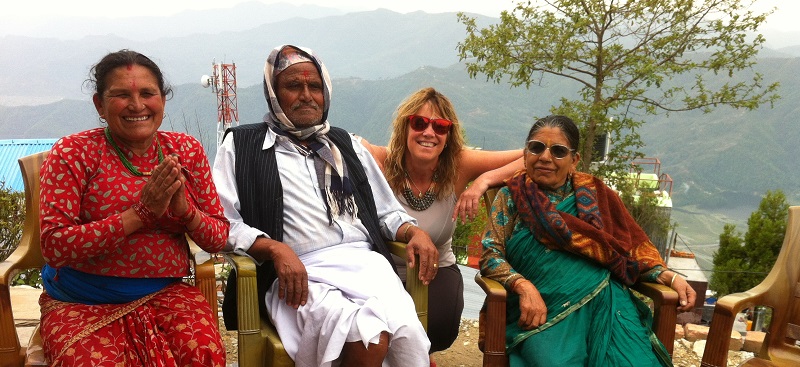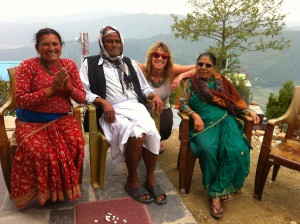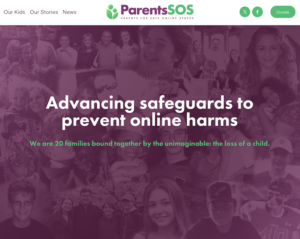As a recent guest lecturer in Canada, US, China, India, and Nepal, I’ve witnessed vast disparities in wealth, religion, and culture. Yet my travels to globally based remote villages have also revealed one striking similarity, one unifying value, one central concept that ties all of humanity together. Above all else, human beings cherish their families. Partners all over the globe unite together to be an indomitable force to advocate for their families. Without exception, parents everywhere love their children, and grandparents provide valuable connections and stories from the past. In fact grandparents over all others, are the most worried and vocal family members about technology overuse. While siblings fight, they also will stand by their brothers and sisters when all else has failed them. Yet despite the universal love I’ve witnessed in families throughout the world, there is a force among them that is tearing families apart. This force is sinister, unraveling the very fabric which used to weave family together. This force is technology, and with the onset of TV, computers, cell phones, and tablets, has also come the degradation of family values, morals, and culture. Gone are the structure, rules, and framework which families use to rely on to guide their decisions about parenting. Prolific overuse of technology has seemingly erased the very fabric with which families used to operate to hold them together. This article will explore technology’s profound and destructive impact on families, and propose strategies for families to disconnect from the virtual, and reclaim what is real. Reweaving family fabric is the way back to creating sustainability for the future generations yet to come.
Increased parental connection to technology is resulting in a disconnection from children, causing children to form unhealthy attachment and addiction to devices at a very young age. New age parents report they think that early exposure to technology will result in a more sophisticated and tech savvy adult, but this premise couldn’t be further from the truth. When infants are born, they have a full complement of neurons, which form pathways or “roads” throughout the brain. Based on the type of environment the child is exposed to, synaptic connections between neurons are formed. Enriched environments, with lots of movement, touch, human connection, and nature, form a diffuse and dense network of connections, resulting in a child with optimal development, behavior, and learning ability. This child will go on to become an adult who can self-regulate energy states, pay attention, create new ideas, form meaningful relationships, and be a productive, high achiever in workplace settings. Children who are exposed to high levels of technology are deprived of movement, touch, human connection, and nature. These children from deprived environments, have smaller brains with fewer synaptic connections, and most importantly, do not grow synaptic connections to the frontal cortex, which is known for executive function, attention, and learning. Essentially decerebrate (without cerebral hemispheres), these children with “tech neglect”, will not go onto to become our best and brightest, and may not go at all. The New England Journal of Medicine reported in 2012 that due to epidemic child obesity and diabetes, we are witnessing the first generation of children many of whom will not outlive their parents.
Ian Hughes states in his article “How do early relationships shape our brains” that there are three core ideas that lie at the center of psychoanalytic thought. The first is that, as infants, we develop best in an environment of love and fun. Second that our internal worlds are formed in early childhood and have an enduring influence on our relationships throughout our lives. And third, that much of the suffering in this world can be traced to neglect and abuse in childhood. The big message to parents is to spend time playing and having fun with their children. This doesn’t mean that it’s the job of parents to spend inordinate amounts of time with their children, but rather that they better manage technology overuse by the whole family through increasing access to healthy activity. In a recent workshop in India, I ended my presentation by bringing in the children, talking to them about some of the downsides of technology, and then asking them to sit with their parents. The families were tasked with two jobs:
- Discuss family values, culture, traditions e.g. parents tell children what they always did as a child and family.
- Decide on one healthy family activity they want to engage in on a weekly basis (they were provided 10 suggested activities).
Through the process of parents reminiscing with their children about their pasts, the parents and children were able to see just how far families have strayed from what they intrinsically value and cherish. Remembering favored events from the past, conjures up images for parents and children of what is really important and meaningful in each family. When encouraged to think beyond the next new device, TV program, or video game, families were able to re-establish healthy and rich ties to the past and each other. What was striking to observe, was that out of 8 families and 12 children, the most favored healthy family activity was to plan one night per week as a “family game night” designated for playing board games, cards, or games such as hide and seek, capture the flag, or tag. Recreating the Family Fabric isn’t all about getting rid of technology, but about understanding the impact of technology on family, and bringing back the culture and values of the family through engagement in more healthy pursuits. I am planning for a presentation in Ecuador in June, and the workshop coordinators have come up with a brilliant idea of following my presentation with having performance artists profile the impact of technology on families, and show ways in which families can engage in more healthy activities.
Please reference below handouts for additional tools, information, and strategies to create your family fabric.
Written by: Cris Rowan, BScOT, BScBi, SIPT, AOTA Approved Provider





